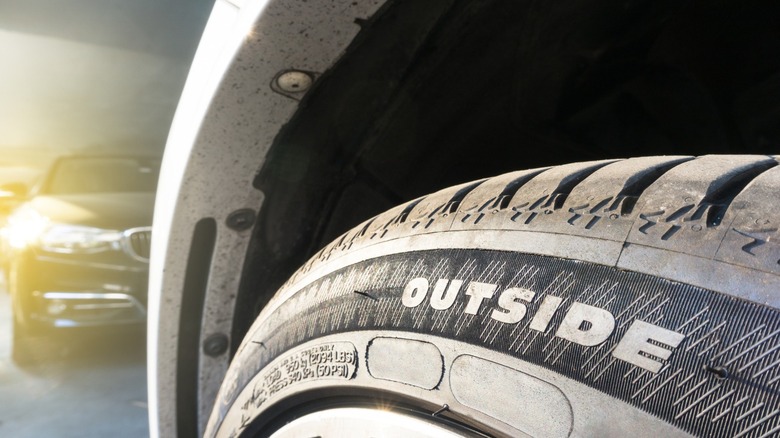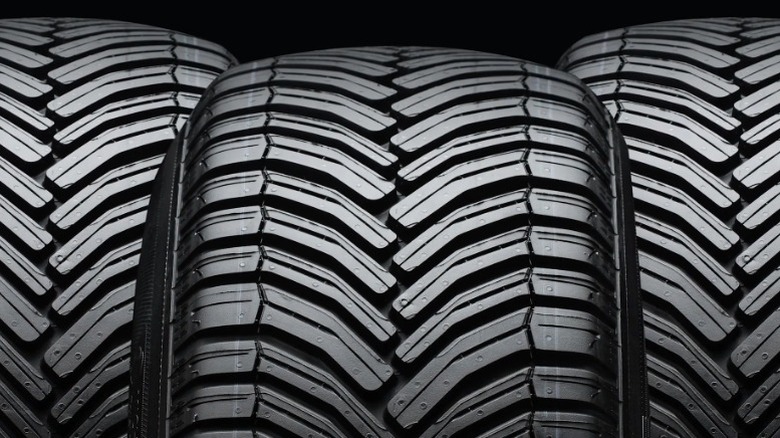Why Do Some Tires Say Inside And Outside?
Most people are aware of the role that tires play in sending us down the road. These durable rubber components are designed to help support our cars' weights, as well as provide traction and assist with vehicle handling. While all car tires are designed with those key purposes in mind, not all vehicle tires are the same. There are obvious differences between some tires, like visible physical differences between all-season tires and off-road tires or winter tires and drag-racing tires. However, there are other less obvious factors that set some tires apart — for example, the words "inside" and "outside" emblazoned on some tires' sidewalls.
If you're not familiar with this type of tire, don't worry, as they're not the most common type of tire for everyday passenger vehicles. The words inside and outside written on a tire's sidewalls indicate that it's a directional tire. In addition to those words, you may also notice arrows pointing in one direction on the sidewall. As the name implies, directional tires are designed to rotate in one direction and have specialized, V-shaped tread patterns to help increase traction and handling in specific driving conditions.
That means that if you buy a set of directional tires, one pair must stay on the driver's side, while the other pair must remain on the passenger side. It also means that special care must be taken during the installation process to avoid mounting the tires incorrectly and during tire rotation services to ensure that the tires are remounted properly. While directional tires do provide a few benefits, they also come with a handful of downsides. If you're interested in learning more, stick around.
Are directional tires worth it?
As mentioned, directional tires provide a couple of benefits in certain driving situations. The greatest benefits of directional tires are an increased ability to maintain traction in wet conditions and help improve handling at very high speeds. The V-shaped tread pattern that we mentioned above helps the tire shed water as it spins. That tread pattern also contributes to enhanced handling at high speeds, even in dry road conditions. Because of these features, directional tires are commonly used on high-performance vehicles, like sports cars and race cars.
That said, many people do choose to install these tires on their daily drivers, and it's not uncommon for some types of seasonal tires, like snow or winter tires, to come with directional tread. Besides the advantages described above, directional tires also have some visual appeal. Many drivers favor the way directional V-shaped tread looks and choose to install these types of tires to give their car a sportier, more aggressive appearance.
If you're interested in directional tires and are wondering whether they're worth buying for your car, there are a couple of things to consider. First, directional tires are often more expensive than standard tires. It's also worth remembering that you can't rotate directional tires in the same way that you can regular tires. Many standard tire rotations involve criss-crossing the tires when performing the service to optimize tread wear. Because directional tires must be installed on the left or right side of the vehicle, you cannot criss-cross them during a rotation, which may lead to a slightly reduced lifespan in the long run.

